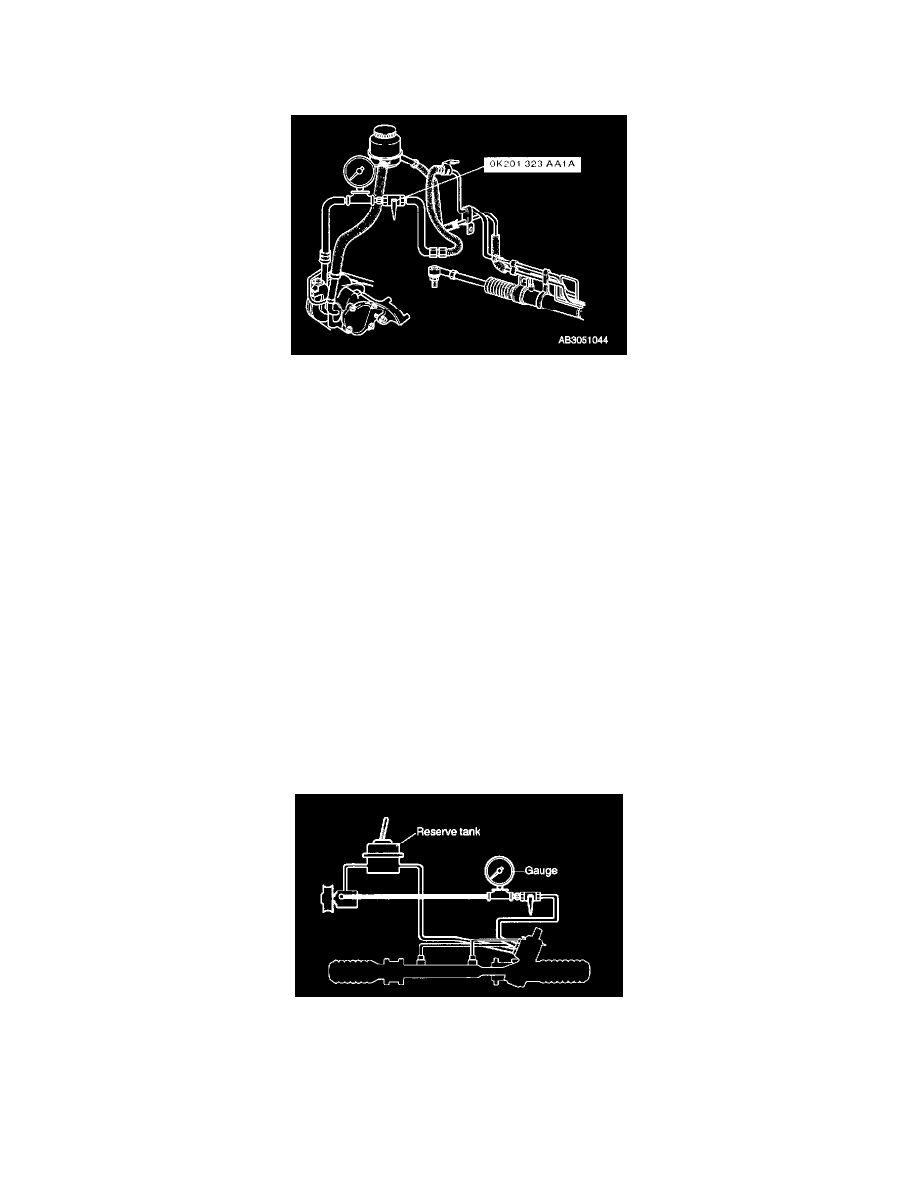Rio L4-1.6L (2004)

Power Steering Fluid: Testing and Inspection
Power Steering Pressure Testing
Power steering pressure testing
Caution: Make sure that the power steering system analyzer valve is OPEN to allow the system to function properly.
Do not hold the steering wheel against a stop for more than ten seconds at a time.
1. Disconnect the high-pressure line and attach Power Steering System Analyzer or equivalent using the appropriate adapters. Tighten the adapters to
29 - 43 ft. lbs. (39 - 59 Nm, 4 - 6 kg-m).
2. Insert a thermometer into the power steering fluid reservoir.
3. Bleed the system using the following procedure:
1) Check the fluid level in the reservoir, add fluid if necessary.
2) Raise and support vehicle.
3) Turn the steering wheel fully left and fully right ten times.
4) Recheck the fluid level. If the level has dropped, add fluid to the reservoir.
5) Repeat Steps 3) and 4) until the fluid level stabilizes.
6) Key ON and let the engine run at idle.
7) Turn the steering wheel fully left and fully right ten times.
8) Verify that the fluid is not foamy. If the fluid is foamy, air is still present in the system.
Repeat Steps 2) through 7).
Notice: Check the system for an air leak if foam is still present
4. Check the power steering fluid temperature. If the temperature is not at 50 - 60°C (122 - 140°F), turn the steering wheel back and forth until the
specified temperature is reached.
Caution: The valve on the power steering system analyzer must be closed briefly to read the operating pressure. Do not leave the valve closed for
more than 15 seconds.
5. Measure the power steering pump output pressure by closing the power steering system analyzer valve and increasing the engine speed to 1,000 -
1,500 rpm. The pressure specification is 7,358 - 7,848 kPa (75 - 80 kg/cm2, 1,067 - 1,138 psi).
^
If the pressure is within specification, continue with the remaining test procedures.
^
If the pressure is low, repair or replace the power steering pump. If the pressure is too high, check for a crimped pipe and repair/replace as
necessary, or replace the power steering pump.
6. With the power steering system analyzer valve open, increase the engine speed to 1,000 - 1,500 rpm.
Caution: Do not hold the steering wheel against a stop for more than 15 seconds at a time.
